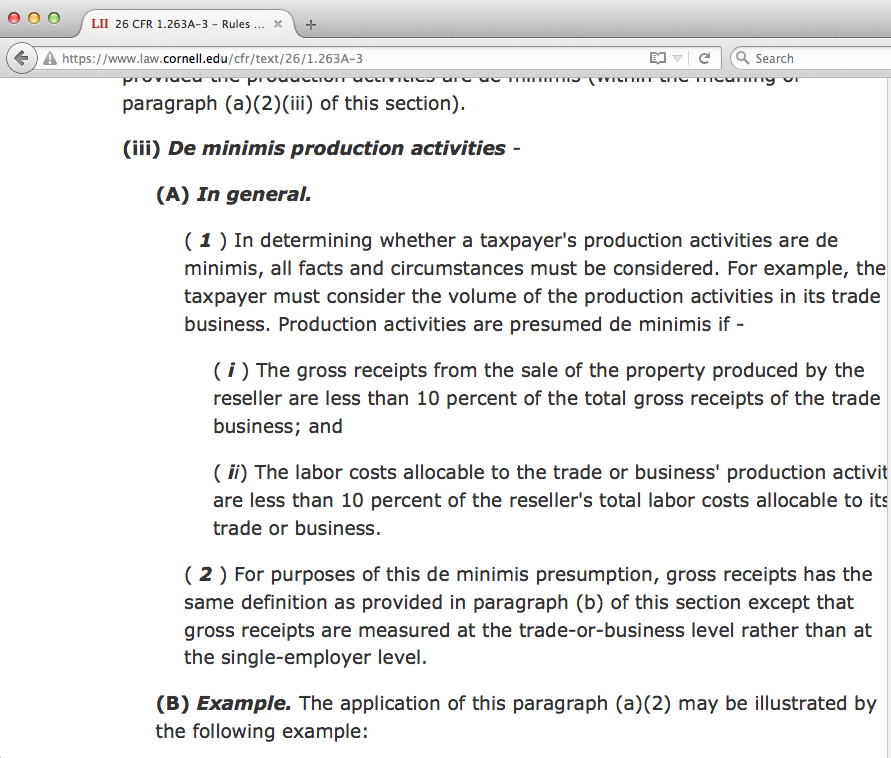Quoting Tom, LII director, who was channeling Frank Wagner, the longest serving Reporter of Decisions for the US Supreme Court,
“The work of a legal publisher is an exercise in serial nitpicking.”
No quibbles with that. I’ve been indulging in some nitpicking. Until this morning, this is what a portion of 26 CFR 1.263A-3 looked like on the eCFR tab:
Note how the enumerators 1, i, ii, 2, and their enclosing braces are not properly bolded. Not good! Since I am the sort that deems suspicious, anyone who posts a Craigslist advertisement with grammatical errors, I can see why someone would take issue with a publisher improperly rendering the bolding on a piece of text. So, it’s fixed.
Now, since I am also basking in the euphoria induced by fixing this presentation problem, I will not bore anyone with the details of negative look-ahead, greedy, non-greedy, capturing, and non-capturing pattern matching with regular expressions in python, while carrying my laptop, uphill, both ways to and from my office, ….





